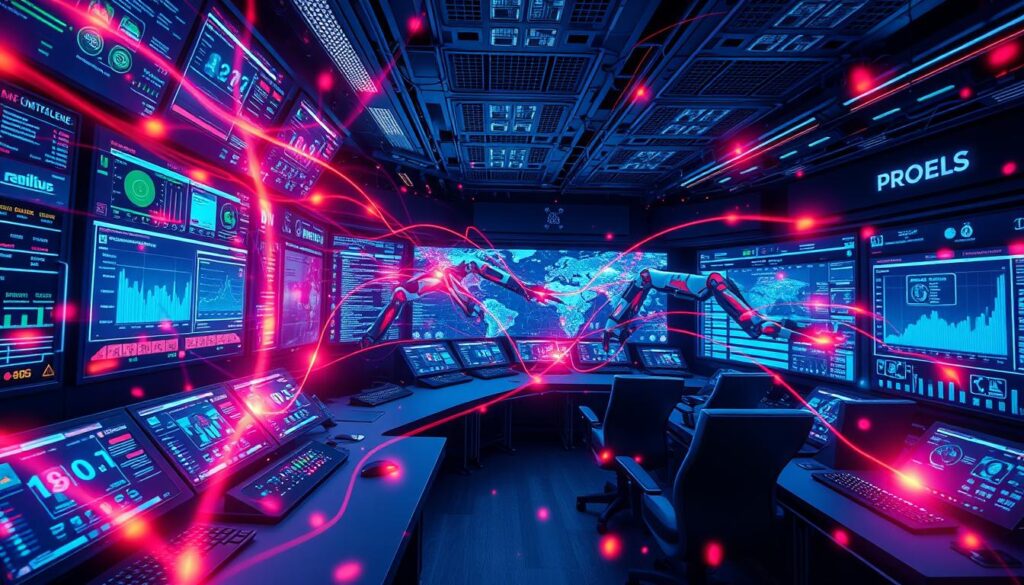In today’s fast-paced digital world, businesses seek ways to improve efficiency and accuracy. I believe combining Robotic Process Automation (RPA) with Artificial Intelligence (AI) creates a powerful operational brain—a system that can think, learn, and act like a human. This combination allows organizations to move beyond simple automation and create intelligent workflows that adapt and optimize processes.
In this article, I’ll explain how RPA and AI work together, their benefits, and real-world applications. I’ll also cover some challenges and provide insights into making the most of this technology.
Understanding RPA and AI
What is RPA?
Robotic Process Automation (RPA) is a technology that uses software robots (bots) to perform repetitive tasks. These bots follow predefined rules to complete processes like:
- Data entry
- Invoice processing
- Customer support automation
- Report generation
RPA works well for structured tasks that do not require decision-making. However, it lacks the ability to learn from data or handle unstructured information.
What is AI?
Artificial Intelligence (AI) enables machines to think, learn, and make decisions. AI can process large amounts of data, recognize patterns, and improve over time. Some key AI technologies include:
- Machine Learning (ML) – Improves decision-making through data analysis.
- Natural Language Processing (NLP) – Helps computers understand and generate human language.
- Computer Vision – Allows machines to interpret and analyze images and videos.
When combined with RPA, AI enhances automation by adding intelligence to processes.
How RPA and AI Work Together
By integrating RPA with AI, businesses create an operational brain—a system capable of handling both structured and unstructured tasks. Here’s how they complement each other:
| Feature | RPA | AI |
|---|---|---|
| Task Type | Rule-based, repetitive | Cognitive, decision-making |
| Learning Ability | No learning capability | Learns from data over time |
| Data Handling | Structured data only | Structured & unstructured data |
| Interaction | Predefined workflows | Adaptive responses |
| Example | Automating invoice processing | Identifying fraud in transactions |
Key Benefits of Combining RPA and AI
- Improved Decision-Making – AI analyzes data to guide RPA bots.
- Faster Processing – Bots process information instantly with AI insights.
- Better Accuracy – AI reduces errors by learning from past mistakes.
- Enhanced Customer Experience – AI-powered bots provide personalized responses.
- Scalability – Businesses can automate more complex workflows.
“By adding AI to RPA, businesses move from simple automation to intelligent automation.”
Real-World Applications of RPA + AI
1. Intelligent Document Processing
AI-powered RPA can read, extract, and validate data from unstructured documents like invoices, contracts, and emails.
2. AI-Driven Customer Support
Chatbots with AI and RPA handle customer inquiries, escalate complex issues, and personalize interactions.
3. Fraud Detection in Banking
AI detects suspicious transactions, and RPA automatically flags or blocks fraudulent activities.
4. Automated Healthcare Claims Processing
RPA extracts data from claim forms, while AI analyzes for errors and approves or rejects claims.
5. Supply Chain Optimization
AI predicts demand, while RPA automates order fulfillment, reducing delays and inefficiencies.
Challenges in Implementing RPA + AI
1. Data Complexity
AI needs high-quality data for accurate predictions. Poor data quality can affect automation results.
2. Integration with Legacy Systems
Older systems may not support AI-driven automation, requiring additional investment.
3. Security Risks
Automating processes increases cybersecurity threats, requiring strict access controls.
4. Employee Resistance
Workers may fear job loss. Proper training and redefining roles help ease this transition.
“Successful automation isn’t just about technology; it’s about people, processes, and culture.”
Best Practices for Implementing RPA + AI
- Start with a Clear Strategy – Identify tasks that benefit most from AI-driven automation.
- Ensure Data Readiness – Clean, structured data leads to better AI predictions.
- Select the Right Tools – Choose scalable RPA and AI platforms for seamless integration.
- Monitor and Optimize – Continuously track performance and refine automation workflows.
- Train Employees – Help staff transition to working alongside AI-powered bots.
Key Takeaways
✅ RPA automates repetitive tasks, while AI adds intelligence to decision-making.
✅ Combining RPA and AI creates an operational brain, improving efficiency and accuracy.
✅ Businesses can use AI-powered RPA in customer service, finance, healthcare, and supply chains.
✅ Challenges include data quality, system integration, security risks, and employee adaptation.
✅ Best practices include strategy planning, data readiness, tool selection, monitoring, and training.
Frequently Asked Questions (FAQ)
1. How does AI improve RPA?
AI enables RPA to handle unstructured data, make decisions, and learn over time, making automation more intelligent.
2. Can AI-powered RPA replace human workers?
No, AI-powered RPA augments human capabilities by handling repetitive tasks, allowing employees to focus on higher-value work.
3. What industries benefit the most from RPA + AI?
Industries like banking, healthcare, retail, logistics, and customer service benefit the most by reducing errors and improving efficiency.
4. How do I start implementing RPA and AI in my business?
Start by identifying repetitive tasks, ensuring clean data, selecting the right tools, and training employees to work with AI-powered bots.
5. Is AI-driven RPA expensive?
Initial costs can be high, but long-term benefits include cost savings, improved accuracy, and faster processing times.
Conclusion
I firmly believe that combining RPA with AI is the future of automation. This technology creates an operational brain capable of learning, adapting, and making intelligent decisions. Companies that embrace AI-driven automation will gain a competitive edge, enhance productivity, and improve customer experiences.
As businesses evolve, the need for smarter automation solutions will only grow. Investing in RPA + AI today will prepare companies for a future of seamless, intelligent operations.
“Automation isn’t about replacing people; it’s about empowering them to do more meaningful work.”
